I told Byron’s fiancé Roni, on a nice hike we went on the day after Thanksgiving, that large birds have black wingtips because black feathers are stronger. I was pretty proud of myself—I thought this was a pretty cool factoid—but she came back with that feared and revered question, that eternal one-word query that so haunts parents and scientists alike: Why, she said. Why are black feathers stronger?
I considered making something up, but she’s getting where she knows me too well, so I took another dive into this subject. Here’s what I found, and I promise not to go off on any tangents this time.
So if you were a bird of paradise and you wanted to show off for a pretty girl, how would you make your chest blink back and forth between two colors?
Okay, call it a tangent, but it’s where you’re about to end up.
First, just to demonstrate that I do have some focus, I’ll answer Roni’s question: Black feathers are stronger because they contain the pigment melanin. Melanin occurs in granules, and any structure containing granules is, not stronger really, but more resistant to abrasion. It doesn’t dent or scratch as easily. And scientists have been able to prove that for cracks to propagate in the keratin of a bird feather, there first has to be damage to its hard surface. Without the initial surface damage, you don’t get cracks developing into what the FAA calls “catastrophic structural failure.” You find it in high-performing flyers like hawks and gulls, out toward the wingtips where the stresses of flight are the worst, but you also find it on small birds in desert areas, because they contend with a lot of abrasion from blowing sand. Unkind scientists spent some time denting the beaks of starlings (yeah, I know…), which are also made of keratin (so are fingernails, hooves and the baleen of whales), and they found that beaks with lots of melanin resist damage 39% better than those without, which means that you can be a large bird without black wingtips (the great egret comes to mind), but your flight feathers will have to be about 39% beefier to put up with the abuse.
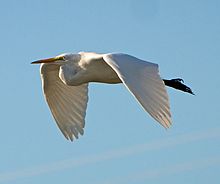
-
Great Egret (Ardea alba)
By Ardea_alba_-San_Francisco_Bay,_California,_USA_-flying-8.jpg: Don DeBold derivative work: Snowmanradio[CC BY 2.0], via Wikimedia CommonsFeathers are the most complex external structure found on any vertebrate. They are amazing pieces of evolutionary engineering, but what blew me away about them on this read is what goes on microscopically on their surfaces, creating their structural colors. As I talked about in the last article, birds have two ways of achieving color: pigment, and iridescence, but actually it’s not always iridescence, which is rainbowing, so scientists just call it structural color. The easiest kind of structural color to describe is an oil slick on water. You end up with two reflective surfaces separated by a teensy distance. Half the light reflects off the first surface, and the other half reflects off the second. The two waveforms return to your eye together but they’ve traveled different distances and they’re out of sync, and they interact, interfere, reinforce, and generally have a good time all over the spectrum, creating new colors depending on the viewer’s angle. That’s iridescence. Scientists know how to overfly an oil spill and measure the film’s thickness by studying its color.
Birds, though, have taken all this to a whole new level. They have total control over what colors get created when, and from what angle, and I mean, it’s sophisticated. They use, just to toss out a few terms that ornithologists think in, reflective films, diffraction gratings, selective mirrors, photonic crystals, crystal fibers and deformed matrices. They are highly precision structures, and when I call them microscopic, I mean really small, like, as small or smaller than the wavelength of light they work with (which renders ordinary light microscopes useless for studying them). And the color doesn’t always look reflective. The deep, rich green of many parrots is created by selective mirrors, which are micron-sized bowls which, because of their size and shape, are able to reflect exactly two wavelengths of light—yellow is able to reflect straight off the bottom of the tiny bowl, and blue is able to do a two-step and ricochet from one wall to the other and then back out. Nothing else reflects. The result is a perfect green, but it gets better: The angles of the bowls are carefully randomized so that you see the color from any angle, and you’d swear you’re looking at a pigment. But you’re not. Grind the feather up in a mortar and pestle and you’ll have a gray powder. Many species do use the rainbowing of iridescence but, again, angle the mechanisms carefully in all directions so that it works from any angle and there is a single vibrant iridescent color that hardly varies with viewpoint. Beetles do this. The colors of the blue and yellow macaw (Ara ararauna) are structural, and though very striking, they do not come and go, because the structures (deformed matrices, in their case) are oriented in all directions.
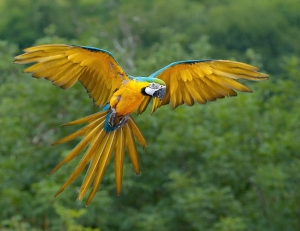
-
Blue and Yellow Macaw (Ara ararauna) — No pigment in those colors!
By Luc Viatour [GFDL] [CC BY 2.0] [CC BY-SA 3.0], via Wikimedia Commons
Birds mix and match the tricks of color. They arrange these structures in concert to create combinations of effects, and they mix pigment color with structural color. The green parakeets in pet shops are a combination of a yellow pigment and a structural blue. An albino parakeet is blue and white. In olive-colored songbirds like vireos you’re seeing a structural yellow, plus melanin.
When they do decide to use the angle of view to get an effect, it can be pretty stunning. It’s why the throats of the hummingbirds in your yard flash as they slalom through the air. Western bluebirds look drab from most perspectives but now and then they’ll catch the sunlight right and break your heart. But my favorite is the bird of paradise called Lawes’s parotia (Parotia lawesii), whose breast plate has structural thin-film iridescence, but arranged into V-shaped ridges, so that it reflects only two colors from only two directions, electric blue-green from one direction, and electric yellow-orange from the other. When he dances for his girl, he shifts his breast back and forth and it blinks from one color to the other.
Pretty amazing stuff, but then birds have had forty million years to work this out, which is about 39.8 million years longer than we’ve existed as a species.
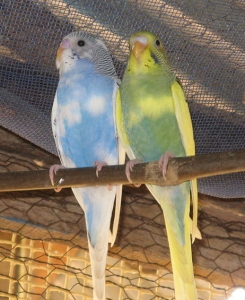
-
Albino parakeet (left)
By Iaminfo [CC BY-SA 3.0] [GFDL], via Wikimedia Commons
And to add one more wrinkle to this, birds can see in the ultra-violet spectrum. They have a fourth cone in their retinas that we don’t have. A scarlet ibis isn’t scarlet if you’re an ibis. He’s deep purple, reflecting a strong structural ultra-violet that we can’t see. Many species of birds appear to us as if the males and females have identical plumage, but they don’t. Not to each other. The western bluebirds I mentioned would be much more stunning birds if we could see in UV. Scientists actually figured this out years ago because the hawks weren’t stopping in a forest in Bavaria. Bear with me. They would always stop over on their migration to hunt voles, and people noticed that when the voles were having a bad year, the hawks wouldn’t even stop. Wouldn’t even drop down and give it a try. They’d just pass on over. How did they know? It turns out that vole pee reflects ultra-violet light. To the eyes of a hawk, those little vole trails light up the forest floor like strings of fairy lights.
Now you know.
Copyright © 2012 Randy Fry

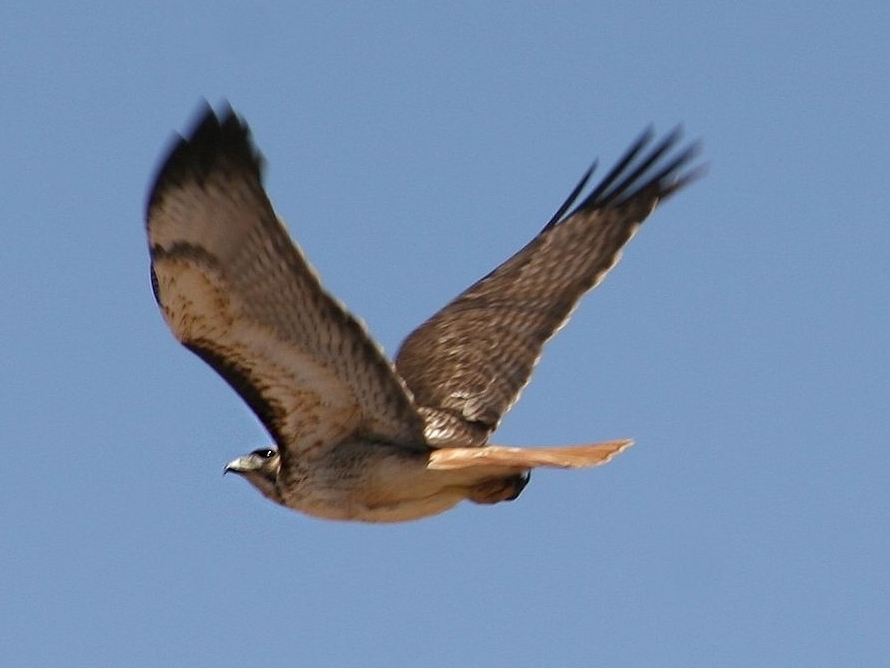
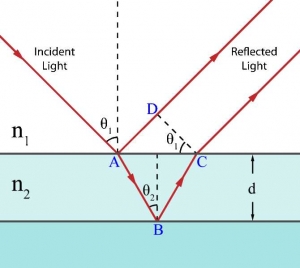
Ranger Randy I normally like your posts, however this one was for the birds! 😉 Dave T